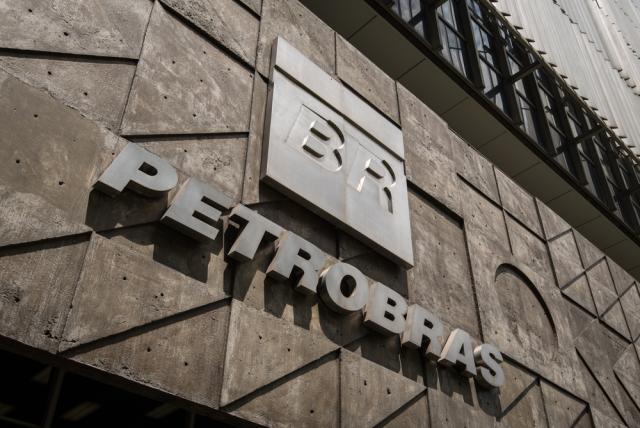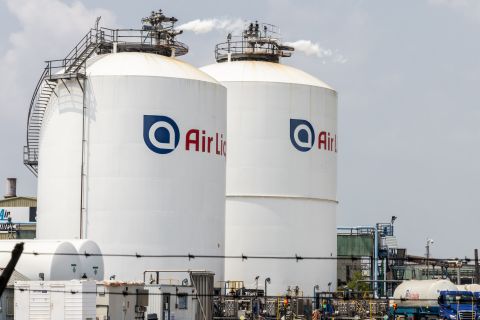
(Source: Donatas Dabravolskas/Shutterstock.com)
RIO DE JANEIRO—After six years of intense debate, state-run Petrobras will be paid US$9.058 billion after reaching an agreement with the Brazilian government, settling a review of the Transfer of Rights area assignment contract.
According to Brazil’s Energy Minister Bento Albuquerque, the agreement announced April 9 helps minimize uncertainties about the planned Oct. 28 auction for rights to extract surplus hydrocarbon resources in the Transfer of Rights area. “There are no more uncertainties,” Albuquerque said.
At issue was a contract, signed in 2010 by Petrobras, in which the government exchanged exploratory rights over the presalt Transfer of Rights area for Petrobras equity. The company paid $42.5 billion for exploration and drilling rights. However, since 2014 Petrobras and the Brazilian government had been in a dispute regarding the indemnity agreement, considering the change in oil prices. Oil prices dropped dramatically from when the contract was signed in 2010.
The agreement helped clear the path for the highly anticipated auction, which could bolster Brazil’s oil industry and ease the country’s fiscal deficit with signature bonus payments made by auction winners.
Credit Suisse analysts called the much awaited news on the agreement positive.
“The market has been waiting for a decision on Transfer of Rights for a long time now, since 2014,”the company said a statement.
However, Credit Suisse emphasized the agreement is not the end of the saga.
“Much still depends on the terms for the reimbursements related to the unitization process with the Surplus Volume of the Transfer of Rights (SVToR) area, which we expect to know more about when the tender documents become public,” Credit Suisse said. “The terms of the SVToR are also important to Petrobras’ investment case, because we expect the company to participate in the bidding round.”
The analysts also said Petrobras should receive the renegotiation proceeds in cash, but it will not ultimately translate into dividends. “We believe Petrobras will allocate substantially all of this capital to fund its participation in the Transfer of Right bidding round,” Credit Suisse said. “We assume the signing bonus will amount to US$25 billion to US$30 billion and that Petrobras will exercise the right of preference for a 30% minimum interest in the auction production-sharing contract.”
Edmar Almeida, an oil and gas consultant and Rio de Janeiro Federal University professor, agreed with Credit Suisse. For him, the agreement is favorable for Petrobras and Brazil’s government.
“I think the agreement represents a very important resource for the company because it will give financial conditions for Petrobras participating in upcoming auctions without increasing its debt. Also, it will help the company to maintain its leadership in Brazil’s ultradeep waters,”Almeida said.
The professor also said that it was a good move by Brazil’s government. The area to be auctioned could become one of the most prolific areas in the world. By “unlocking this giant oil field for the market, the country has enormous potential to boost Brazilian oil production,” Almeida said
The Transfer of Rights area is expected to hold up to 10 billion barrels (Bbbl) of oil, according to ANP, Brazil’s oil regulator.
For comparison, the Libra Field—the largest presalt field offshore Brazil—is estimated to have up to 12 Bbbl of recoverable oil. Production began in November 2017. When rights were awarded for Libra to a consortium formed by Petrobras (operator, 40%), Shell Brasil (20%), Total (20%), CNPC (10%) and CNOOC Ltd., the signature bonus paid was $6 billion, making it one of the highest ever worldwide at that time.
Fernanda Delgado, researcher coordinator at Brazilian think tank Fundação Getúlio Vargas, said the area to be auctioned is located in Buzios presalt field area in the Santos Basin. Buzios is one of Petrobras’ main presalt assets.
“This area is very prolific. By closing this agreement, the Brazilian oil sector gains more attractiveness from the largest companies in the world, as it allows a greater opening of the market,” Delgado said. The field began producing oil in April 2018. Currently, the field is operated by four FPSOs.
Recommended Reading
Air Products Sees $15B Hydrogen, Energy Transition Project Backlog
2024-02-07 - Pennsylvania-headquartered Air Products has eight hydrogen projects underway and is targeting an IRR of more than 10%.
Air Liquide Eyes More Investments as Backlog Grows to $4.8B
2024-02-22 - Air Liquide reported a net profit of €3.08 billion ($US3.33 billion) for 2023, up more than 11% compared to 2022.
Green Swan Seeks US Financing for Global Decarbonization Projects
2024-02-21 - Green Swan, an investment platform seeking to provide capital to countries signed on to the Paris Agreement, is courting U.S. investors to fund decarbonization projects in countries including Iran and Venezuela, its executives told Hart Energy.
Sunoco’s $7B Acquisition of NuStar Evades Further FTC Scrutiny
2024-04-09 - The waiting period under the Hart-Scott-Rodino Antitrust Improvements Act for Sunoco’s pending acquisition of NuStar Energy has expired, bringing the deal one step closer to completion.
Thanks to New Technologies Group, CNX Records 16th Consecutive Quarter of FCF
2024-01-26 - Despite exiting Adams Fork Project, CNX Resources expects 2024 to yield even greater cash flow.





